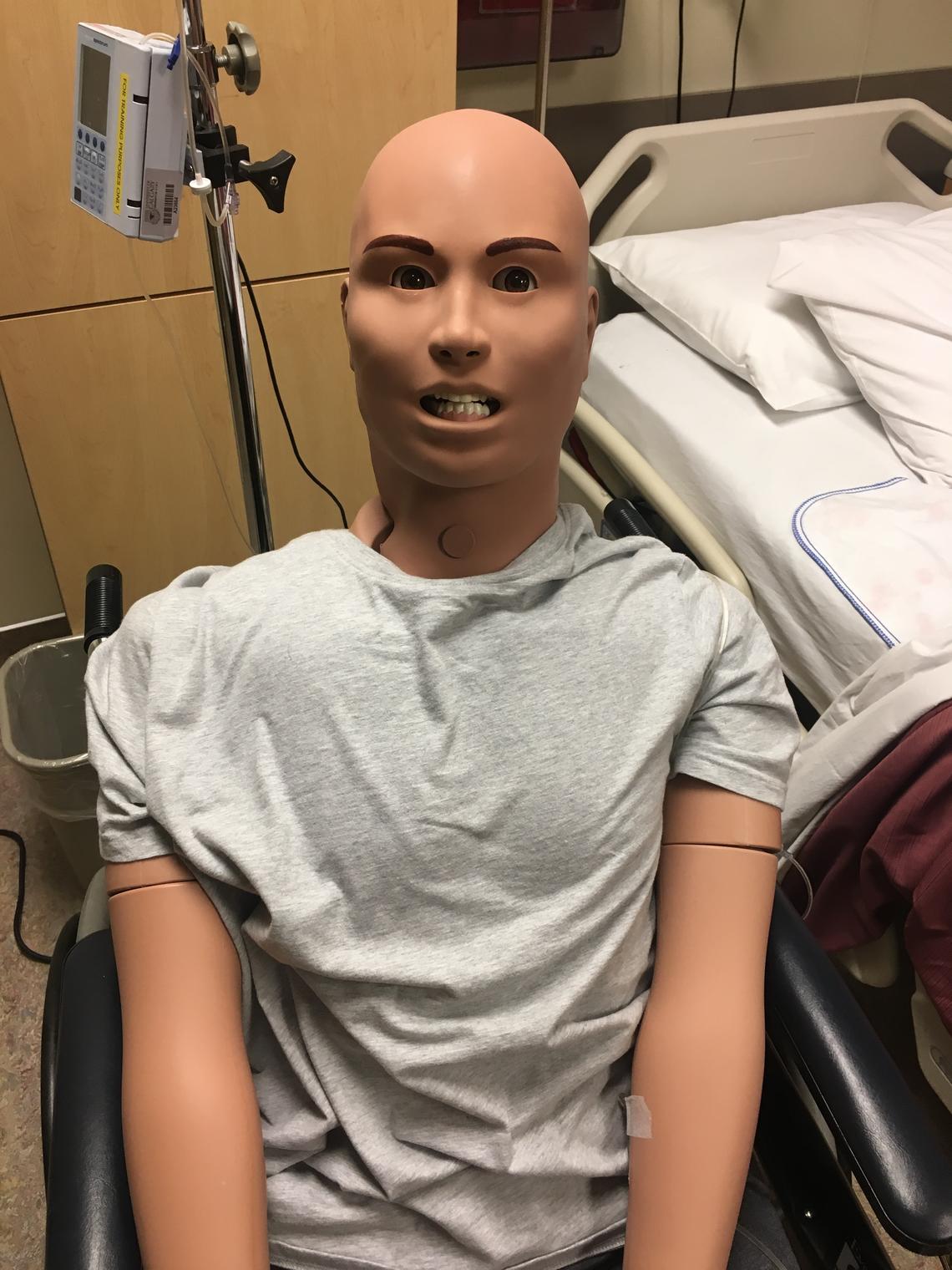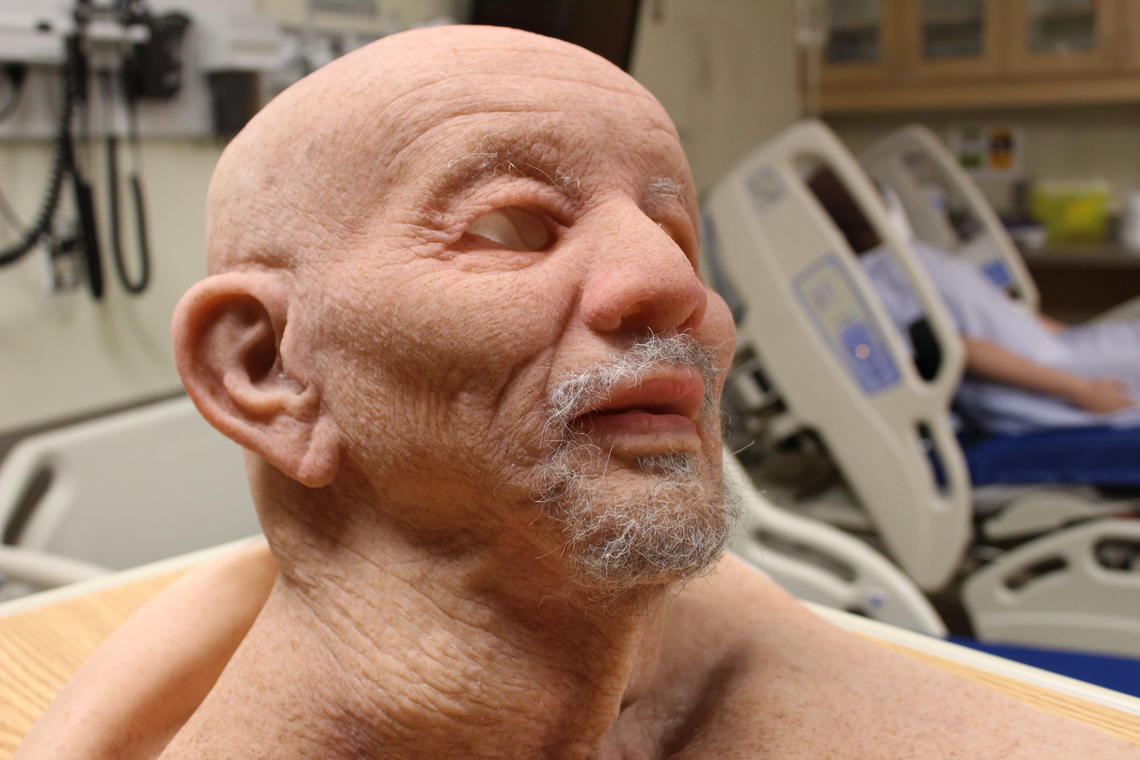June 2, 2021
Realistic masks increase immersion for nursing students

Realism is vital in helping today’s nursing students prepare to save lives tomorrow.
The Faculty of Nursing’s Clinical Simulation Learning Centre (CSLC) recently added four EchoMasks to its training equipment. Developed by Lifecast, these are ultra-realistic, medical-grade silicone masks that fit over existing manikin heads.
Training manikins are predominately Caucasian and male in appearance, so it makes it difficult for students to envision the wide range of patients they will be dealing with in practice, says CSLC manager Jeff Dawes.
“They were really not representative of the patient population they would have to deal with, or the community they live and work in,” he says.
Dawes says Lifecast started out making simulated bodies for movies and television, including X-Men: First Class and The Beast, and transferred this technology into helping create more lifelike simulators.
Before these masks, the CSLC had to rely on moulage, using makeup to make the manikins appear a certain age or have certain wounds. This method was both cost- and time-consuming, and the makeup could prove difficult to remove from the manikins after a simulation.

The original manikins were plain and homogenous, while the EchoMasks allow the simulations to feature more realistic-looking patients.
“The value of the masks is that it’s as easy as putting on the mask to increase the level of fidelity in terms of getting buy-in and suspending disbelief from learners,” says Carla Ferreira, BN’03, the nursing practice simulation co-ordinator at the CSLC.
The masks simulate the appearance of both male and female patients of different ages and ethnicities. Dawes says more masks will be ordered over time.
“At the end of the day, we would like to be able to represent our entire population,” he says.
Due to the COVID-19 pandemic, not many students have had the chance to see the masks in person yet, but Ferreira says those that have have remarked on how realistic they look. She says this is good, as realism is an important concept when it comes to simulation-based learning experiences.
Ferreira says the more believable the simulation, the more students can suspend their disbelief, which, in turn, allows them to focus on the learning objectives of said simulation.

“If they can buy into what they’re seeing, then they can engage in the learning in a different way,” says Ferreira. “Sometimes, it’s really weird to ask learners to imagine they’re talking to an 80-year-old person, yet what they’re seeing in front of them is nothing like what they perceive an 80-year-old to look like, so adding the mask removes that element of using some of their working memory in order to process that.
“The masks are a tool we can use to add a layer of realism to these [otherwise-]homogenous manikins.”
Dawes says he hopes the added layer of realism will aid students in achieving the learning outcomes of the simulations.
“The more [realism] we add, the less [students] need to suspend disbelief, and our assumption is that is a good thing and that it helps learning,” he says.





